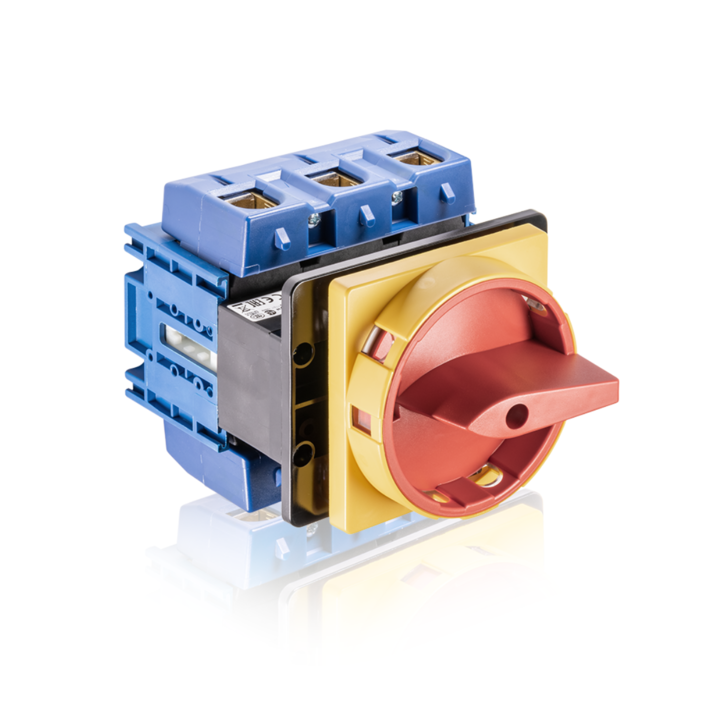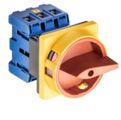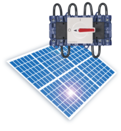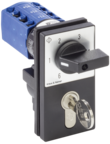Info
Load switches vs switch disconnectors: similarities and differences

What is the difference between load switches and switch disconnectors? How are they operated and what do they have in common?
These and other questions will be answered in this article.
Table of Contents:
1. What do load switches and switch disconnectors have in common?
2. What is the difference between load switches and switch disconnectors?
3. What are the application areas of load switches and switch disconnectors?
1. What do load switches and switch disconnectors have in common?
In general, the switch function as switch disconnector or load switch is not necessarily linked to the type of construction. This means that both load switches and switch disconnectors can be used as cam switches or compact switches.
Furthermore, both switch types are used to make and break load currents.


2. What is the difference between load switches and switch disconnectors?
In order to clarify the difference between load switches and switch disconnectors, it is important to first explain what is meant by each switch type and what function it has.
2.1 What is a load switch?
Load switches are suitable for switching current-carrying equipment and system parts under undisturbed conditions with the intended operating current. Since these switches are operated under load and switching arcs can occur, they include various design measures for arc quenching.
2.2 What is a switch disconnector?
Switch disconnectors merge the functions of load switches and disconnectors and can thus be considered a combination of these switch types.
Switch disconnectors fulfill the isolating functions such as appropriately dimensioned clearances and creepage distances as well as switching status indications. Furthermore, they have a certain switching capacity. The switching capacity is generally defined as the ability to switch flowing currents, whereby the switching capacity of a switching device differs, depending on the loading case. The different loading cases are standardized and assigned to different utilization categories.

3. What are the application areas of load switches and switch disconnectors?
Switch disconnectors are used for example as main switches or disconnector units in machines or in other devices. A main switch is equipped with a padlock device in order to lock the switch in the OFF position.
Load switches are used when no isolating function is required. This may be the case when a reversing switch for electric motors or, in general, a control switch is used to control different functions (or circuits) within a machine or electrical system.
Both types of switches - load switches and switch disconnectors - are often used in machines or electrical devices. A good example for this would be a lifting platform in a car workshop. A main switch (switch disconnector) is used to switch the lifting platform on and off. The lifting platform itself can be raised and lowered by means of a reversing switch (load switch). In order to secure the lifting platform against unintentional operation or switching on during maintenance, the main switch can be locked in the OFF position.

4. Examples from the Kraus & Naimer product portfolio
The Kraus & Naimer product portfolio offers the ideal solution for almost every application. In the following section you will get an overview of our extensive product range, including load and control switches as well as switch disconnectors.
4.1 Kraus & Naimer load switches
Kraus & Naimer cam switches are ideal control and load switches. Thanks to the different contact systems and contact materials it is possible to use them in solid-state circuits as well as under aggressive environmental conditions.

4.2 Kraus & Naimer switch disconnectors
Examples of switch disconnectors from the Kraus & Naimer product portfolio are the new KA switch line or the classic KG switches. These switch disconnectors are highly durable and were specially developed for use as main switches and maintenance switches in machine tools, distribution and control cabinets.
Switches of the C switch line represent not only the classic Kraus & Naimer cam switches but they can also be used as switch disconnectors. Depending on the switch type, easily accessible Philips screws or bolt connections for ring terminals and terminal covers are available.
In order to meet the requirements of photovoltaic systems, a specific switch line has been developed. It includes DC switch disconnectors with rated operational currents from 12 A to 60 A and up to 1000 V, suitable for the following utilization categories: DC-PV0, DC-PV2 or DC-21B. AC switch disconnectors in completely insulated enclosures are also available at Kraus & Naimer.
Eager to learn more about the Kraus & Naimer load switches and switch disconnectors?
Then contact us, we will be happy to advise you!







![[Translate to English:]](/fileadmin/_processed_/9/7/csm_Funktionsgriffe-gehaeuse_39329593e8.png)

